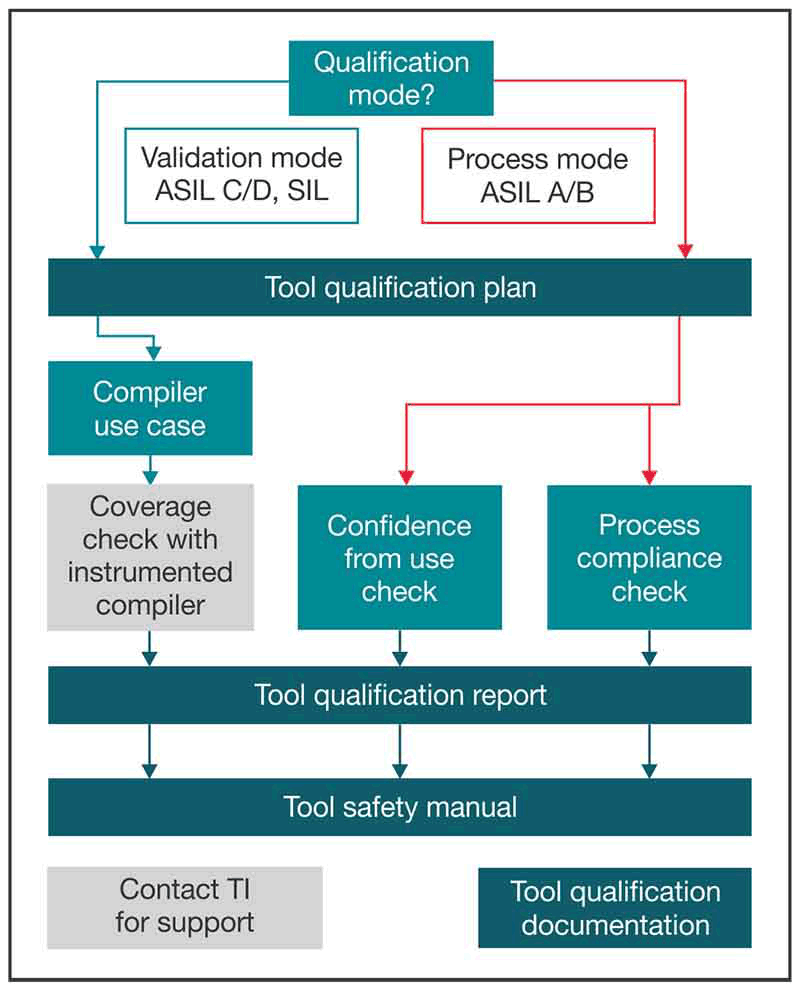-
Simplify Your Functionally Safe System Development With the TI Arm®︎ Clang Compiler
Simplify Your Functionally Safe System Development With the TI Arm®︎ Clang Compiler
Greg Miller

Developing functional safety systems in a streamlined and simplified manner calls for robust functional safety support. Part of this includes having the resources to validate that the development tools used in the system design process meet functional safety requirements.
The new TI Arm® Clang compiler’s available TI compiler qualification kit helps simplify system design development efforts. The TI compiler qualification kit allows you to validate that your use of the TI Arm® Clang compiler is compliant with industrial, automotive and railway functional safety standards. Unlike certified compilers that limit your use cases to those validated during certification, using the qualification kit gives you flexibility to use all compiler options and features of the TI Arm® Clang compiler to maximize the functionality and performance of your functionally safe applications.
Functional safety standards require evaluation, classification and qualification of all tools used in mass production of functionally safe systems. The TI Arm® Clang compiler qualification kit provides the collateral needed to help you with both tool classification and tool qualification. It provides an added benefit in that you can use any combination of features and options to address your specific application needs.
The free TI Arm Clang compiler qualification kit includes:
- User guide
- Qualification documentation templates
- Tool qualification plan
- Tool qualification report
- Tool safety manual
- Tool definition report
- Tool validation report
- Tool process compliance report
- Functional safety standards compliance reports
- Instrumented version of the TI C/C++ compiler
- TÜV NORD assessment report
You can easily apply the TI Arm Clang compiler qualification kit using the steps as shown in the flowchart in Figure 1:
- Determine the qualification mode (process or validation mode).
- Fill out provided templates.
- For process-based qualification, perform confidence from use check.
- For validation-based qualification, perform code coverage check.
- Use the tool safety manual.
 Figure 1 TI Compiler Qualification Kit Application Flow
Figure 1 TI Compiler Qualification Kit Application FlowFor more details on applying the TI compiler qualification kit, download the QKIT and see the user guide.
In addition to simplifying the development of functionally safe systems, the TI Arm® Clang compiler also includes support for dynamically generated source-based code coverage for your functional safety embedded applications. This feature supports branch coverage and could be used for generating unit test coverage data of your functional safety application as may be required by functional safety standards. Learn more details about TI Arm® Clang’s dynamic code coverage capabilities.
Additional Resources:
- Download the TI Arm Clang compiler.
- Download the TI Arm Clang compiler qualification kit.
- Read the QKIT overview and features for more details.